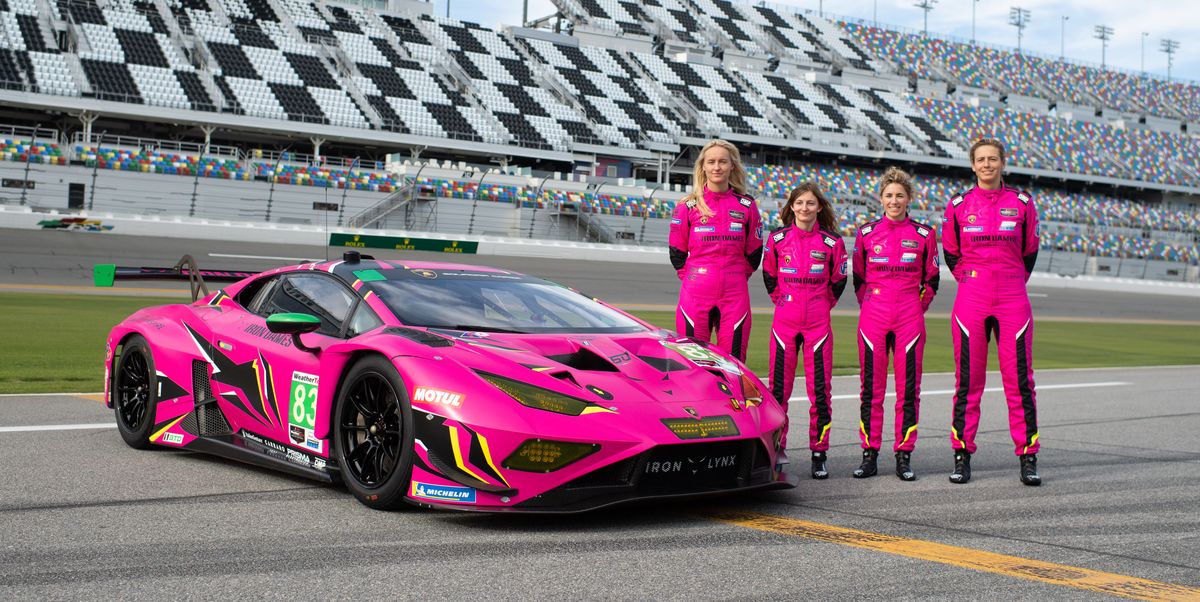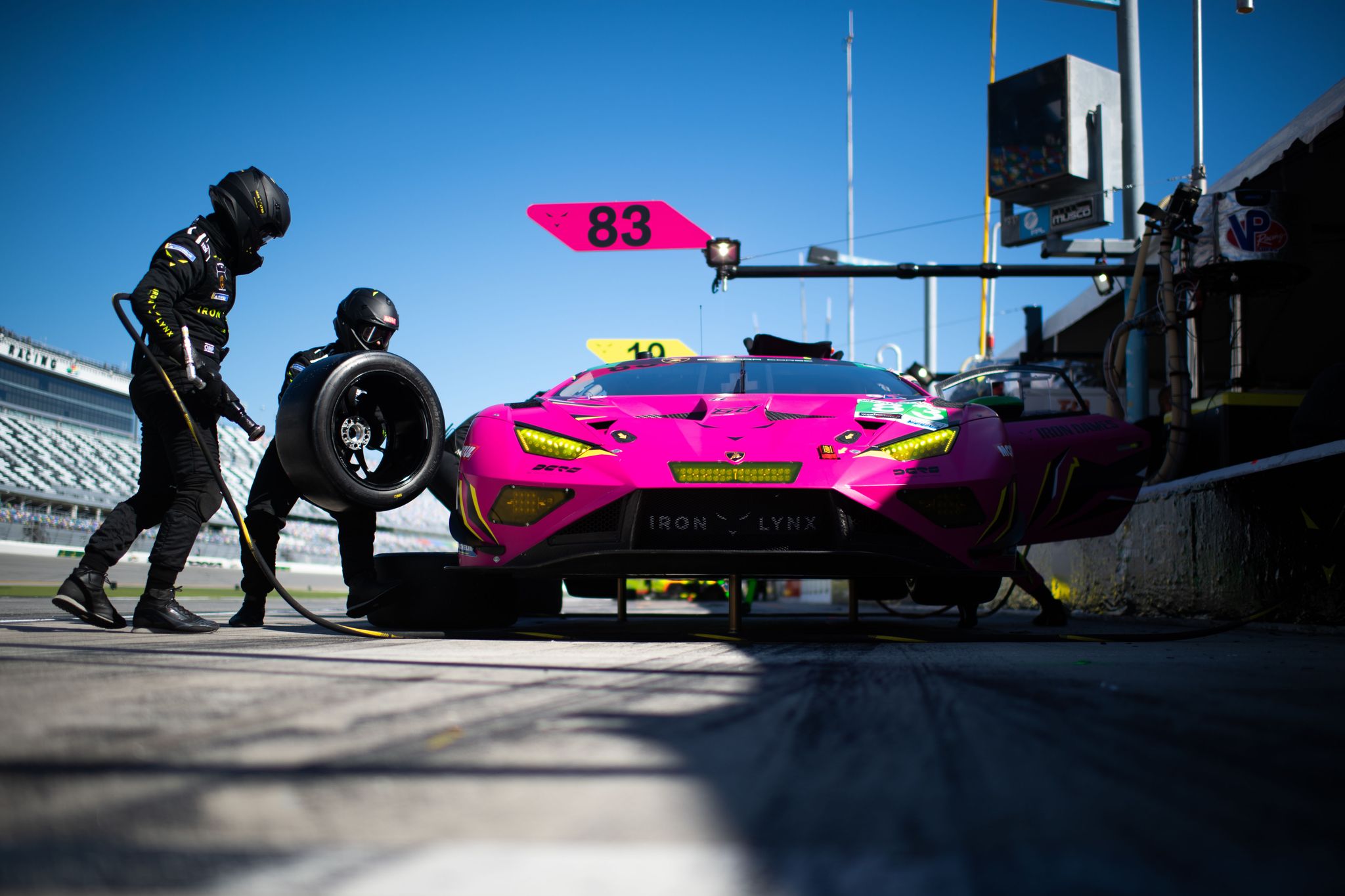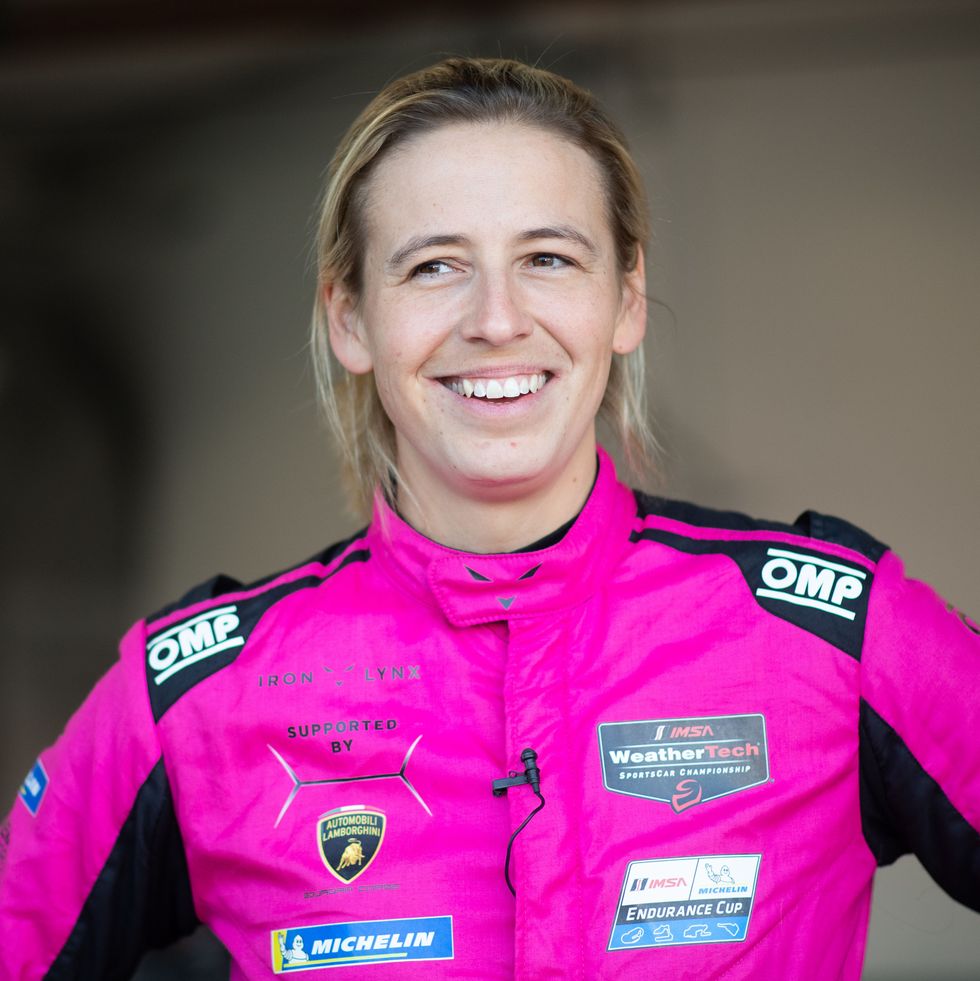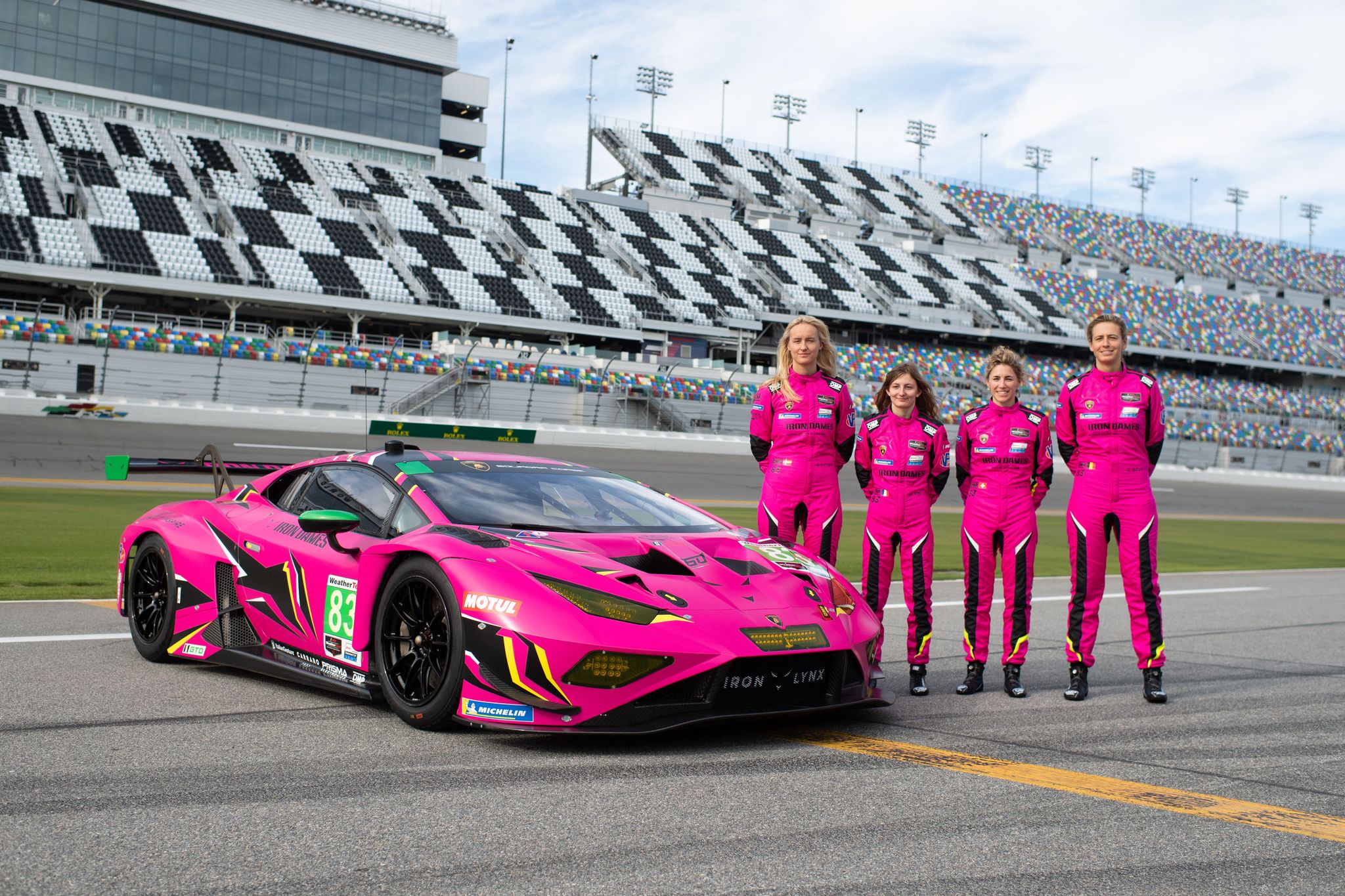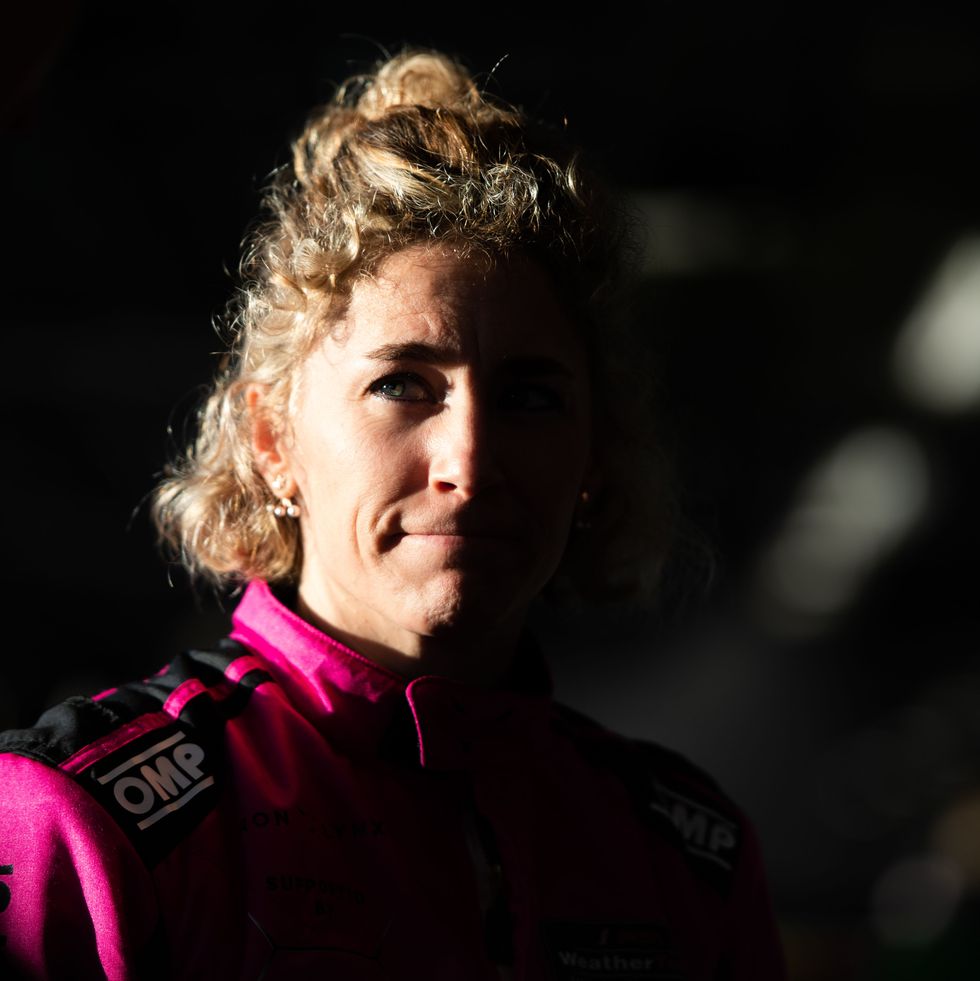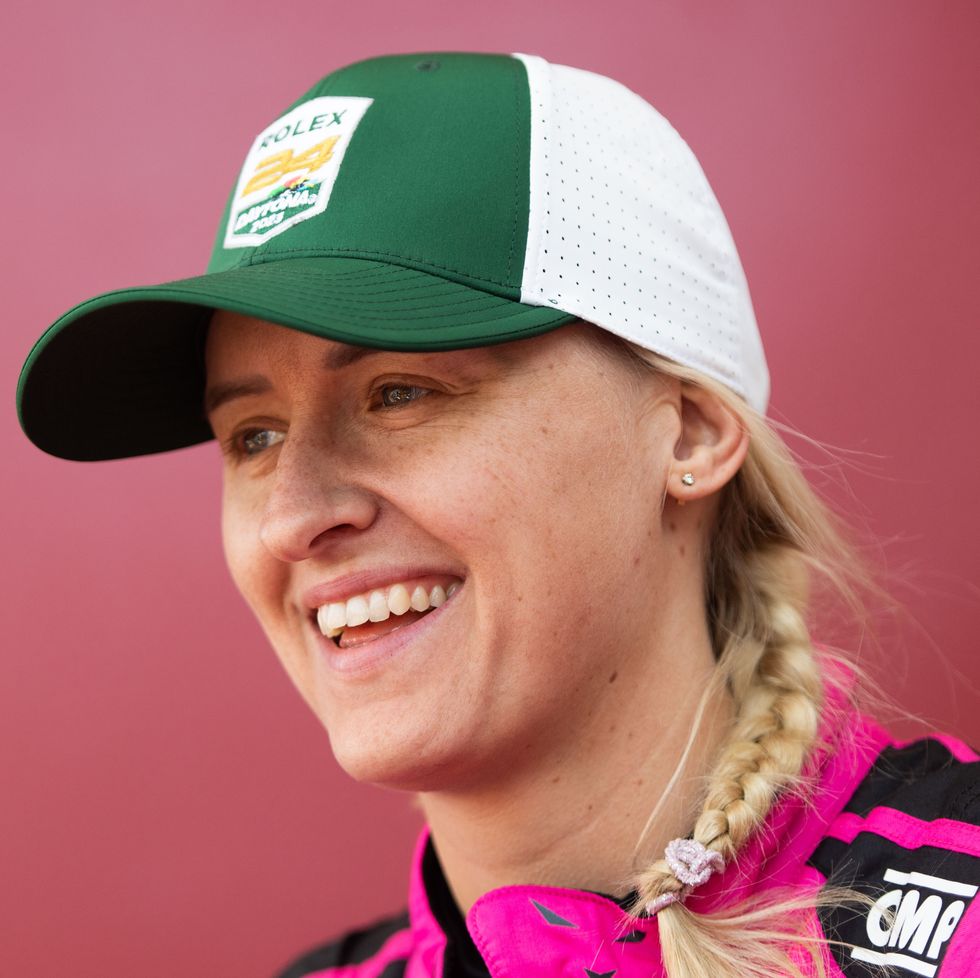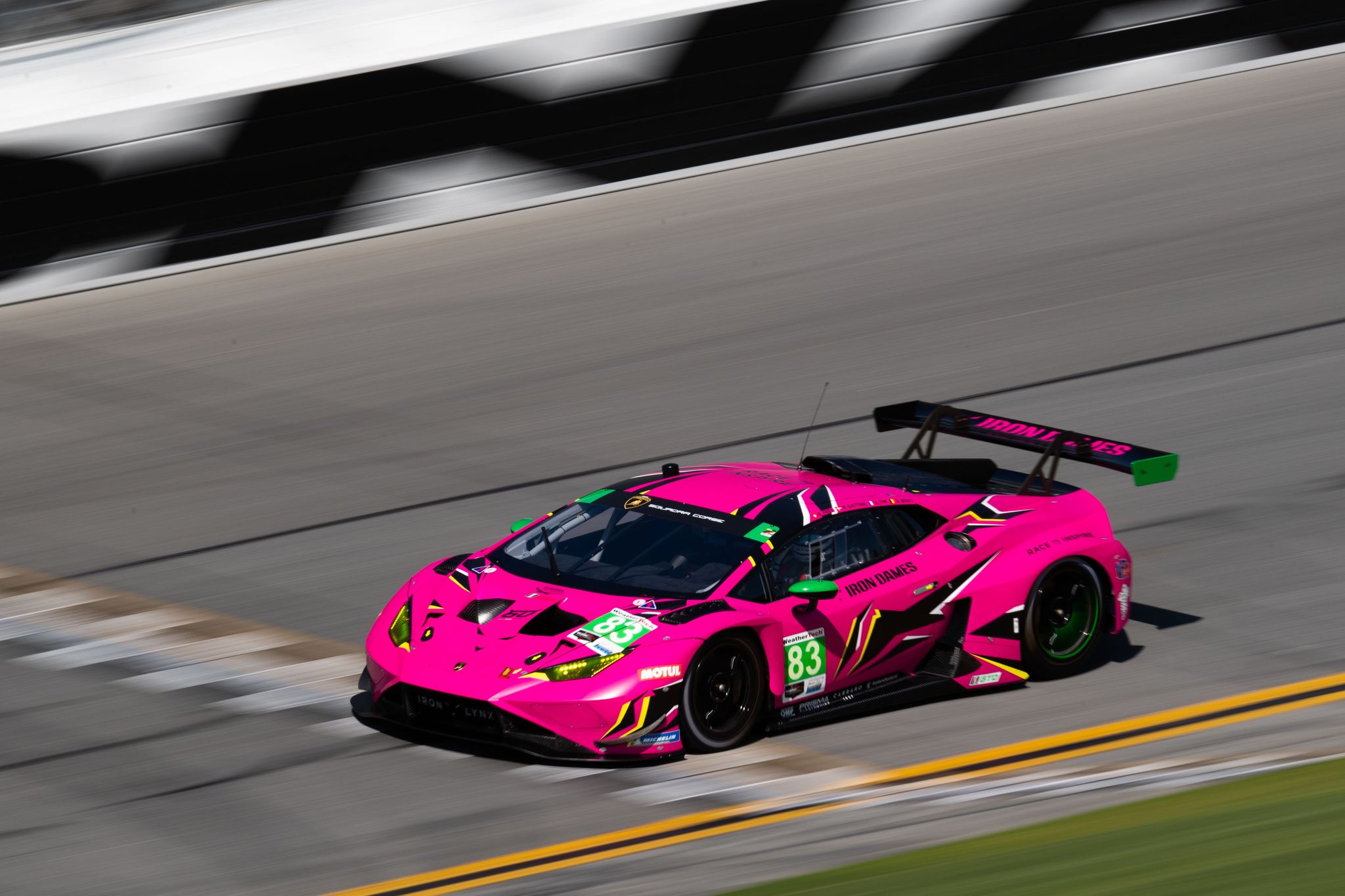Walk into any motorsport event, and you’ll be hit with the overpowering smell of gas and hot rubber, and the near-deafening sound of revving engines. Look closer—in the pits, behind the wheel, in the team trailers—and you’ll be struck by something else. From the drivers to the engineers to the crews keeping cars in tip-top shape, there are surprisingly few women working the hot side of the track.
The glaring gender gap stands out even more as we enter into a new era of sports where equal access and level playing fields can be just as important as wins. One team in particular is leading the charge to change the historically male-dominated sport of racing—and they’re doing it in bright pink.
The Iron Dames are the first all-female team in endurance racing history. Since 2018, they have been competing around the world wearing bubblegum-colored suits and driving a matching Lamborghini Huracán GT3 EVO 2. The car is so finely tuned for performance that it should only ever be taken out on a racetrack. The Dames are made up of four drivers—all under age 37. Individually, Rahel Frey, Michelle Gatting, Sarah Bovy, and Doriane Pin have a record number of wins in some of the most physically and mentally demanding automotive races in the world. Together, they are unstoppable.
“There we are in the brightest pink car you can imagine,” Gatting tells ELLE.com. “We’re underlining that we are girls, but at the end of the day, we can do exactly the same thing behind the steering wheel as men.”
The Dames are garnering as much attention for their Barbiecore livery as they are for their mission to inspire more women to get into racing. Between management, engineering, mechanics, communications, and marketing, the group’s founder Deborah Mayer has overseen their growth into a 24-woman team that, to date, has 51 podium finishes. “We are really proud that the project is where it is and plan to drive it in the long run,” Mayer says.
“This project is bigger than just us,” echoes Bovy.
The Dames are making waves in the male-dominated world of race car driving, but there’s a long road ahead. After all, it’s still exceedingly rare to see a woman behind the wheel. Out of roughly 3,000 drivers throughout its existence, NASCAR has only had around 20 women. Danica Patrick’s historic IndyCar win, one of the sport’s most defining moments, was nearly 15 years ago. More and more women are racing in series like the WRC World Rally, an off-road rally, or the NHRA Drag Race, which tests acceleration and speed over short distances. But even here, they are greatly outnumbered.
Major racing organizations do offer funding and support for female drivers, engineers, and pit crews—including programs specifically designed to get more women into racing. Trailblazing drivers like Lyn St. James and Cindi Lux have pointed out that relegating women to all-female series can, in the long run, do more harm than good. As St. James told Road & Track, “I’d rather see it be half men and half women, so you diffuse the fact that it’s segregating women. It is a male-dominated sport; it is a sport where women need to learn to compete equally with men.”
Taken with long-held sexist beliefs that women racing drivers aren’t physically able to keep up with their male counterparts, these tactics can undermine the truth that women can, and do, drive just as fast as men.
Motorsports have a checkered past of tokenizing women and casting them as sex symbols, like the grid girls, who paraded ahead of cars at races up until 2018. Fédération Internationale de l’Automobile or FIA, the sport’s international governing body, has struggled to upend these stereotypes and support women in a comprehensive way. There are myriad reasons why it’s been inordinately difficult to get women drivers on the grid. It could be due to a lack of funding for female drivers, while others point to sexism that runs deep amongst the exceedingly wealthy team owners who finance racing.
As motorsports catch up with the rest of the sports world, the Iron Dames are taking matters into their own hands. In addition to founding the group, Mayer is also the current President of the FIA Women in Motorsport Commission, a group created in 2009 to “demonstrate that women are recognized by the highest body responsible for motorsport and show that motorsport is open to women in all of its aspects, whether as competitors, officials, team managers, engineers, mechanics, etc.”
Mayer believes that motorsports has a bright and more equitable future thanks to efforts made by women, for women. “There are more and more women involved in motorsport. There have always been women around. The biggest problem has been a problem of awareness,” she says, noting that when she first floated the idea of an all-women’s endurance racing team to financial backers, it wasn’t taken seriously. “They thought it would be a project that would come and go,” Mayer says. “From day one, I told everyone that this is not a project that will disappear after one year.”
The Dames are more visible than ever. Last year, they made headlines after winning their GT3 sports car class at the 24 Hours of Spa in Belgium, one of the world’s most grueling endurance races. In January 2023, they raced in the Rolex 24 at Daytona, a 24-hour motorsport race where teams of up to four take two-hour or longer stints behind the wheel for 24 hours straight. A mechanical problem with their bright pink Lamborghini put them a number of laps behind the leader a few hours into the race, but they still managed to finish eighteenth in their class, completing 659 laps in total. “We get questions, like, ‘Are you all girls? Are all of you driving the car?’” Gatting says. “You’re just standing there in your suit, like, ‘Yeah it’s pretty obvious.’ When we put our helmets on, though, we want to be seen as racers. I want to be seen as a driver. I don’t want to [just] be seen as a girl in the pink Lamborghini.”
The Dames do stand out, which is the point. But they are also highly respected for their skills on the track. Former Formula 1 driver and Iron Lynx teammate Romain Grosjean doesn’t see the Iron Dames that he races with in 24-hour circuits as anything other than competition. “Their car is pink, but that’s all I see,” Grosjean says. “The difference is the color of the car, [but] they are race drivers just like we are.”
Like most extreme sports, those who are the most successful start young. Drivers begin competing in go-karts at ages six and seven, well before they have a street license or can even reach the pedals of a consumer vehicle. From there, they can graduate to sports cars, single-seaters, or to preliminary series that eventually lead to Formula 1. While there are many paths to becoming a race car driver, there aren’t many young girls competing in these spaces. Female role models like the Dames are helping change that.
“The Iron Dames program is about creating history,” Frey says. “So far, we simply have not had too many role models to look up to in racing. That’s something we really need to change.” Motorsports, she adds, “should not be about gender.”
In addition to having visible role models, getting more people to understand that young women can succeed is integral to the growth of the sport. The Dames recently signed Aurelia Nobels, a 16-year-old Brazilian racing driver competing in Formula 4, a single-seater feeder series for Formula 1. They are also supporting 14-year-old kart racer Natalia Granada.
“You go on a go-kart track today and actually see girls there who have big dreams of becoming professional racing drivers,” Gatting says. “It’s really changing. It took many years, but everything takes time.”
Author
Abigail is a freelance feature journalist whose work is focused on social justice, equality, health & wellness, business & personal finance, and technology. She’s also an Emmy Award-winning television producer, a skilled interviewer, moderator, and on-air and in-person host.
